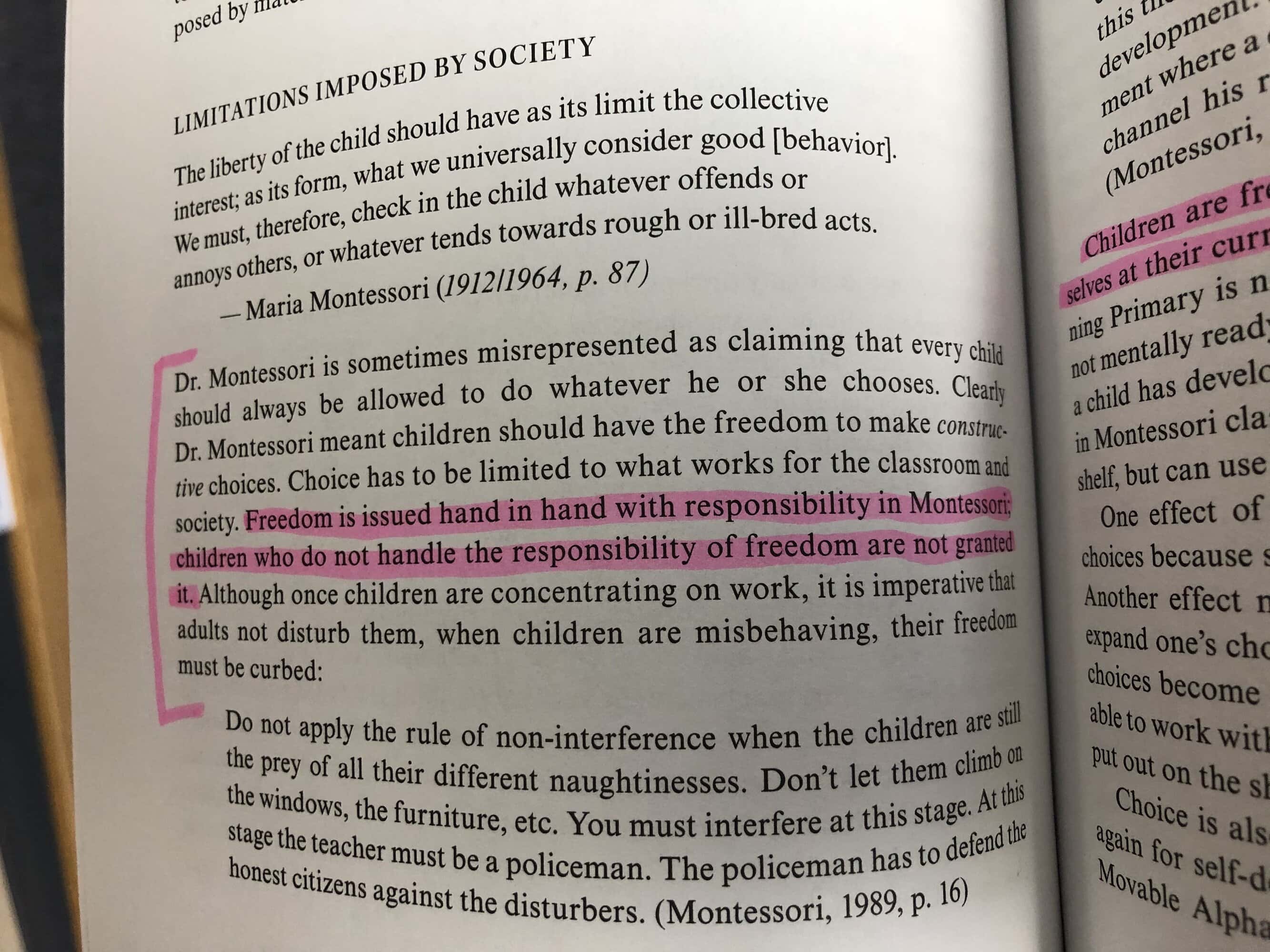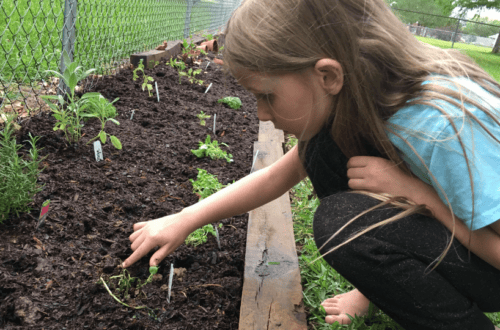
Freedom Within Limits — The Idea of Rights, Responsibilities, & Freedoms in Montessori
A common misconception about Montessori classrooms is that students get to run free. That they get to do WhAtEvEr they want to do in the classroom. Many people think that Montessori = Freedom, but it’s not that simple. I am not disagreeing, there is a LOT of freedom in the Montessori classroom at home. The real Montessori way of thinking is FREEDOM within LIMITS. This has been a constant topic in our class discussions lately as the students learn what they can control in the classroom with their choices and actions. It is a conversation that can easily be had in the home too!
I am currently a Montessori Lower Elementary Guide–which means I have a multi-age classroom with 1st through 3rd graders! My daughter is currently one of my 1st graders! We have so much fun…most of the time…=P A key guideline in the classroom is freedom within limits.
“To let the child do as he likes when he has not yet developed any powers of control is to betray the idea of freedom.”
— Maria Montessori, The Absorbent Mind
For me, as the teacher and as the parent at home, I set the limits of what each child can do, and those limits will fluctuate based on each child’s needs. The child then gets the freedom to choose within those limits. If the child is making wise choices, the limits expand and he/she gets more choices. If the child is making poor decisions or is struggling to make decisions, the limits shrink. So freedom within limits can grow or shrink as the child’s needs change.
This isn’t a punishment, it is just giving freedom as the child earns and is capable of handling it! Freedom can be given really early too! For example, allowing a toddler to choose between two outfits to wear that day or two options for breakfast. You’re giving two options, which is your setting a limit, and he/she gets the freedom to choose! Congratulations, you’re giving them the beginnings of independence and confidence in making their own choices!

Rights + Responsibilities = Freedom
We’ve talked about rights, responsibilities, and freedoms during our class discussions recently and the students all know they have some pretty big responsibilities in the classroom (and at home too!)! If they are taking care of their responsibilities (to get their work done, to allow others in the class to focus, to learn, to be respectful, etc.), then they get a lot of freedom (to sit with whoever they’d like, to choose their own work and when to do it, to chat quietly during work cycle, to have free time in the afternoon, etc.).
Since beginning these discussions in the classroom and setting up some basic guidelines around their work, I have noticed a significant improvement in what types of work are being chosen and completed by many of the students. If a child is completing all of her work without distracting other children during the work cycle, she is going to find that she will be granted much more freedom of choice and movement in the classroom. This goes back to the original theme of freedom within limits. When the child shows she is capable of doing the work, she is granted more freedom and fewer limits. This goes for homeschooling as well. When there are clear guidelines around work, everyone will feel more successful.
I have the RIGHT to be a child
We began our discussion about rights with a book called I Have the Right to Be a Child by Alain Serres, Aurelia Fronty, and Helen Mixter. This book introduces the idea that children have rights just like adults do! Children have the right to eat, have shelter, be respected, the right NOT to work, to be educated, etc.
After reading about the rights that children have I moved the conversation to the idea of responsibilities and that having rights comes with responsibility. For example, you have the right to an education so in order to take advantage of that right, you have the responsibility to do your best to learn AND you have the responsibility to not disturb someone else’s right to an education (example: talking to others while they are trying to work). You have the right to be respected and therefore have the responsibility to be respectful to others.


Our children have rights, those never change, and if they are fulfilling their responsibilities then they will be granted freedoms. If they are not holding up their responsibilities, their freedoms are limited. I LOVED having these conversations with my class and with my own child at home. They were so understanding and capable of having a deep conversation about all of this. Having the conversation showed me that they are more mature than some adults give them credit for sometimes!
Independence, Confidence, & Natural Consequences
The concept of rights, responsibilities, and freedoms can be directly correlated to independence, confidence, and natural consequences. When you are working on one of those concepts at home, you are moving in the right direction towards the others as well. The conversation about rights, responsibilities, and freedoms would be a great discussion topic for at home! Ask your child what rights he/she has at home, what responsibilities he/she has to help take care of him/herself and take care of the house, and what freedoms come along with those rights and responsibilities. I think you will be pleasantly surprised at how much your child can connect all of these things and it will show you that they are ready to take on some of the responsibility to earn the freedom.
Let me know your thoughts about this topic in the comments! I would love to hear what connections you made when reading it! Do you think you’ll have a conversation with your classroom or homeschool kids?









